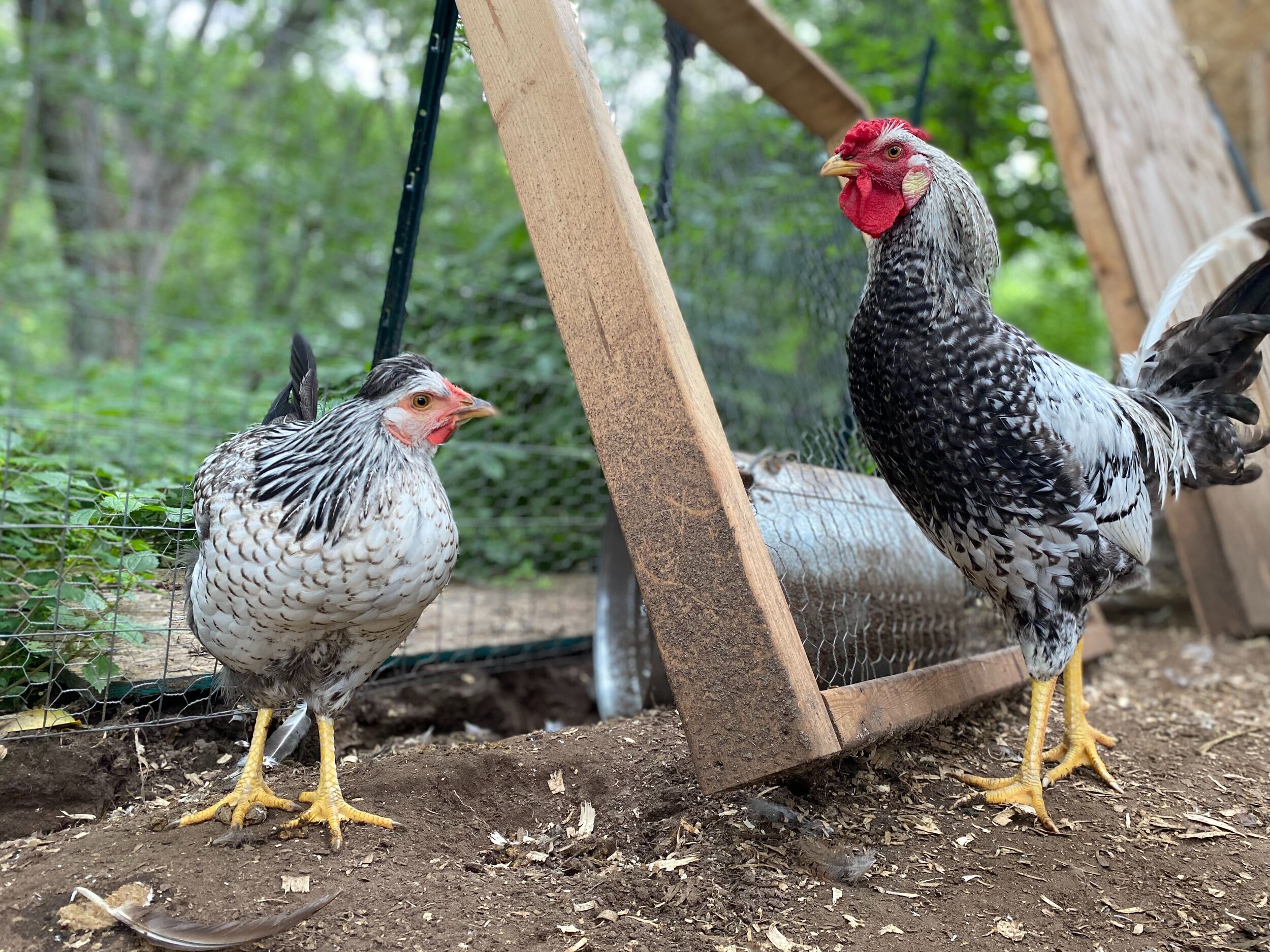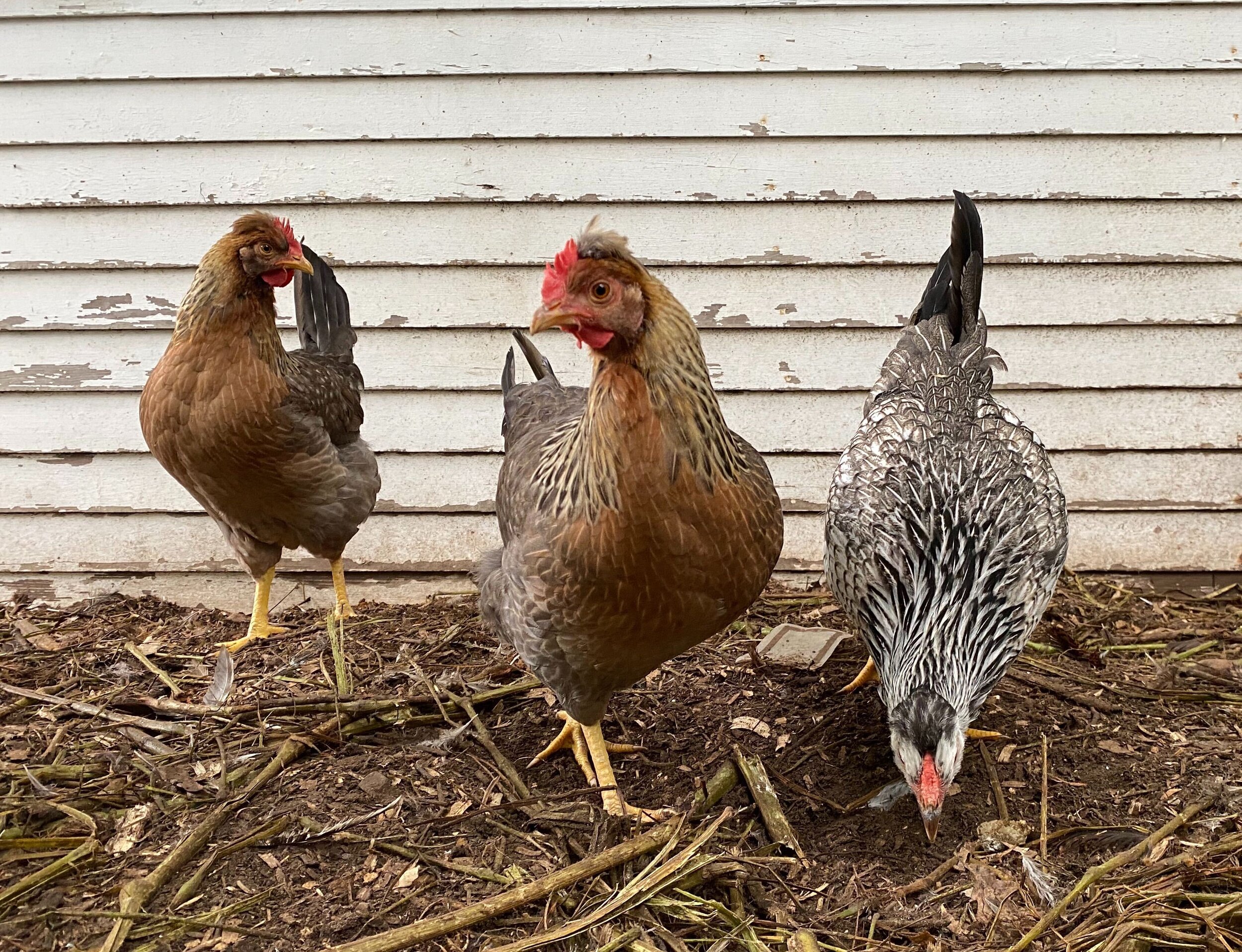#DoTheMath on Chicken Regulations
Editor’s Note: This week, we are publishing several articles on the essential role food and the food economy play in building stronger and more financially resilient communities. Make sure to follow along with all the articles from Strong Towns Food Week!
As I was choosing where to settle down in Wisconsin’s Chippewa Valley, chicken regulations were high on my list of priorities.
What I found as I researched the tri-county area is that where chicken ordinances were on the books, they had more to do with establishing order than they did ensuring that people had more ways to access healthy food.
A simple way to localize food
Raising your own eggs gives you a sense of security that’s hard to beat. When COVID-19 caused our grocery store shelves to go empty for the first weeks of April, it was a relief to know that we had a reliable source of protein in our backyard. Now, it’s one less thing I have to don a mask to go to the store for.
It allows me to develop a purposeful relationship with my neighbors—I give the people who live within earshot of my roosters free eggs, and they don’t complain. In general, backyard (and windowsill) farming decentralizes our food system, making us less reliant on the successes and failures of large, tightly-coupled agricultural outfits.
Raising poultry is a fairly accessible way for people to bring their food systems closer to home and build household and neighborhood resilience.
The problem? Raising chickens is illegal—or regulated into prohibitive expense—in many suburban and urban areas.
The chicken ordinance passed in Eau Claire, Wisconsin in 2018 is a prime example. Up until December of that year, it was against city ordinances to keep chickens within city limits. A dedicated group of residents and council members worked diligently to propose an ordinance that would legalize the practice, and their victory was more than ten years in the making.
The 2018 ordinance on chicken keeping is “orderly-but-dumb,” meaning it is meant to meet a criteria, but in meeting that standard fails to address the needs of the community. It was intended to make nutritious food more accessible, but in effect, just gives residents an opportunity to obtain more expensive eggs.
The Math
Baby chicks can cost anywhere from $1 each to $5 and up depending on breed and sex. The ordinance bans male chickens at any age, meaning that the cost per bird is going to be $2-3 for exclusively female birds. The maximum number of birds you can keep is 5. So we’ll say that including tax, you’ll pay $15 for your birds.
The ordinance states that chicken shelters may not be made of repurposed structures on the lot such as sheds, so those seeking to raise chickens must build a brand-new coop. The structure must have a sealed floor, may not be temporary, and must be made out of approved materials — this to make absolutely certain to encourage cleanliness and discourage rodents. In the area, one can purchase a prefab chicken coop that meets these criteria for $300.
For five hens, you’ll need about $10 of feed per month, for a total of $120 per year.
Ignoring the cost of feeders, waterers, and bedding, the price of the first year works out to about $435. This is all pretty reasonable, when compared to many backyard chicken operations.




A healthy hen will lay an egg about once every two days, which among five hens works out to almost two dozen eggs a week, or 104 dozen per year. (Let’s ignore the fact that they won’t start laying for six months.)
One dozen gray-market backyard chicken eggs goes for $2 in my area. At full production, that works out to about $208 worth of eggs. On the first year of raising your own chickens in Eau Claire, you might have taken a $227 loss. Every year after that, assuming full production, your chickens would produce an extra $88 worth of eggs over the cost of feed.
Until you add in the $95 pre-inspection fee and the annual $90 chicken license fee the ordinance requires.
Now your first year total cost is $620. You’re making a $412 investment you’ll never see returns on, and when you subtract the cost of feed and the annual license fee from your $208 worth of eggs, you lose $2 every year.
Even if you value your eggs at the $4/dozen (roughly the cost of store bought organic free-range eggs) it would take a year and nine months to “break even.”
The rules specify setbacks for coops from structures and property lines that disqualify those with smaller properties from obtaining a license. The city requires specific storage techniques for food, particular coop design, and more. With the minutiae regulated, there is little room for creative, low-cost approaches to chicken rearing.
The cherry on top is that it is illegal to sell your eggs, and if you give them away, you must keep records of each transaction including the names and addresses of those who you give to. So any eggs that you don’t eat out of your weekly two dozen might just go to waste.
Most backyard chicken farmers aren’t in it to save or make money. Breaking even is an afterthought for those who are seeking to gain some independence from larger food systems, some security against hiccups in such systems, and some enjoyment in the process of caring for animals.
But when we #DoTheMath on this chicken ordinance, how does it serve the basic needs of the community? How does it make food more accessible, especially to those who already have access problems and don’t have hundreds of dollars to pay in licensing fees?
Reframing the Conversation
Our places should be friendly toward food production. As Strong Towns President Chuck Marohn wrote earlier this week, most communities in North America could produce the bulk of their food and earn the security that comes with it.
The process of legalizing such practices where they are currently disallowed shouldn’t come with a barrage of criteria and fees that keep them effectively out-of-reach, as they did in Eau Claire.
We need to allow for the “chaotic-but-smart” systems that make the best use of our resources and innovative nature. Letting people raise their own food will likely always have some messy externalities. Creation is dirty work! And there might be disputes or disagreements, as there always are when people live close to one another, if we ease up our focus on order.
Going right for the political work of changing regulations is a big ask. Let’s start small: We need to help our neighbors see front yard gardens and backyard chicken coops not as eyesores and nuisances, but as the wealth of resilience. A rooster’s crows mean fresh eggs.



Lauren Ronnander, the Director of Communications for Strong Towns, is an actual idealist who loves making things and double-spacing the end of sentences. Before joining the Strong Towns team in 2020, she worked as a journalist and an editor. She lives with her husband and an almost uncountable number of animals (including cats, dogs, sheep, chickens, and rabbits) in a super-awesome neighborhood in the American Midwest. Her experience in the Alaska Bush, downtown living in an up-and-coming Midwestern city, and now residing in a rural Chippewa Valley, Wisconsin, community has provided her with precious insight into the many ways our places can grow stronger.
Are you a member of the media and want to talk about Strong Towns? Email Lauren at press@strongtowns.org.